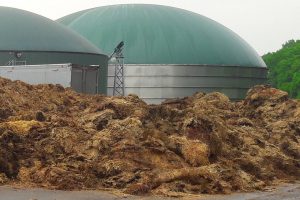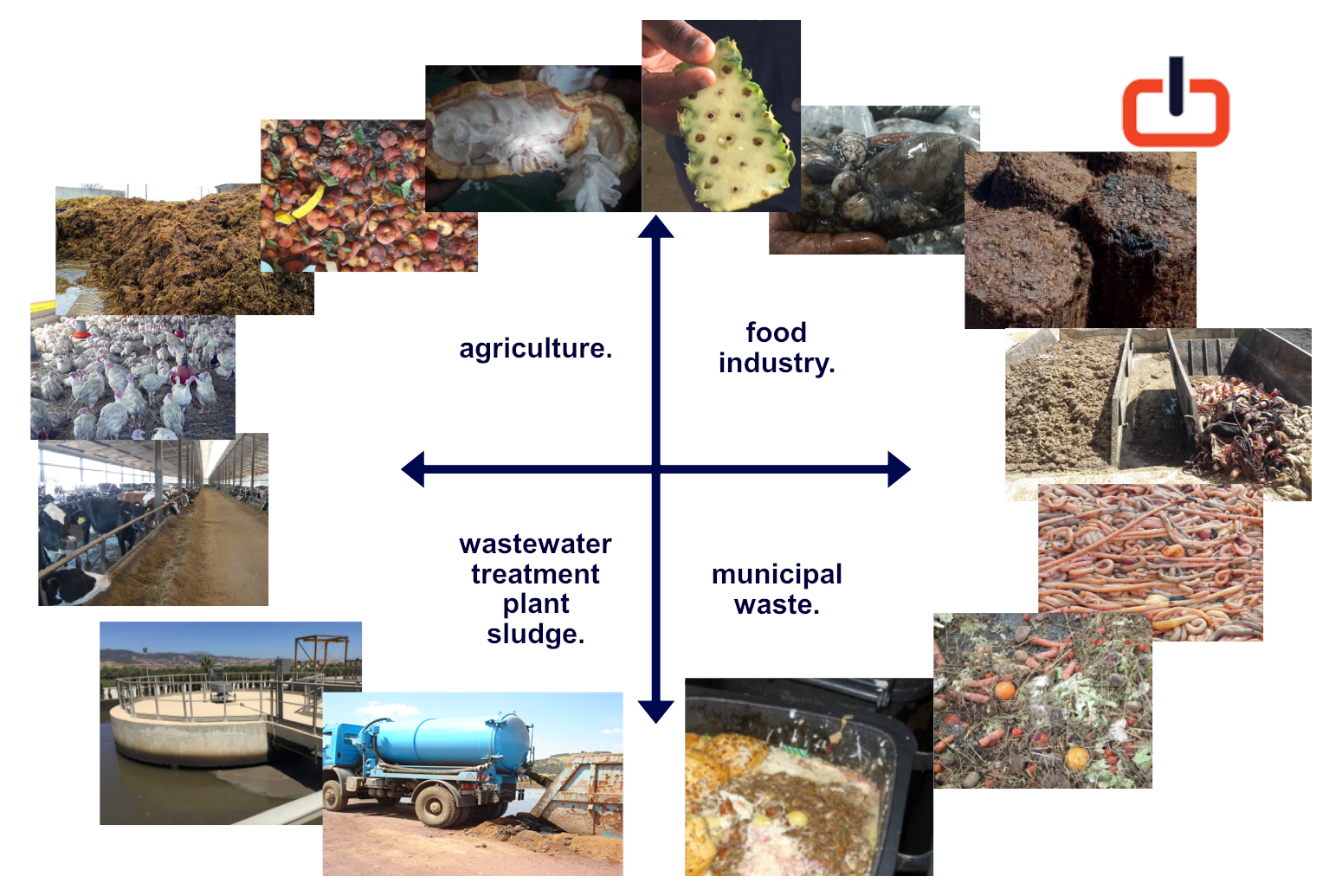@generizon, we consider the biodegradable/organic fraction of waste, which inherently constitutes perished biomass, a valuable resource.
from biomass. to sustainable treatment of organic waste.
Biomass is an important source of energy and Morocco has an enormous potential. Biomass use is essentially the utilization of organic waste streams.
Biomass is organic matter,
- of plant origin (micro-algae included),
- animal origin,
- or bacterial or fungal origin,
for
- the production of energy, bio-energy, heat or electricity,
- the production of compost, no energy,
- the production of synthesized fuels, chemicals,
- the recirculation of nutriments back to earth, agriculture.

Organic waste is part of biomass, it is perished biomass like
- the organic fraction OF of municipal waste: household waste, green waste, etc.
- agricultural waste: manure, slurry, crop waste, citrus, corn, tomatoes, etc.
- agro-industry waste: dairies, fishmongers, sugar refineries, distilleries, industrial effluents, etc.
- wastewater treatment plant sludge.
Utilization of biomass energy can be achieved through
- anaerobic digestion, biogas production, (the field of generizon), in CSTR or PlugFlow (HSAD) reactors.
- a host of different combustion technologies (wood chips, olive cake, fruit pits, pellets, …),
- gasification (rather) / pyrolysis (not so), hydrothermal carbonization (not really), others,
- biofuel production, methanol, SAF, biodiesel, etc.
Every technology choice has its merits and/or shortcomings, is destined for a particular type of biomass, comes with difficulties, needs logistics, etc.
organic waste treatment.
Through anaerobic digestion, generizon promotes projects aimed at the sustainable treatment of organic waste (waste2energy, waste-to-energy), in favor of the circular economy and the production of renewable energies.
Compared to other renewable energy sources (solar, wind), organic waste2energy projects (that essentially treat perished biomass matter), offer a whole range of distinctive added values. Besides the production of clean, carbon-free, in many cases carbon-negative energy (impossible with solar and wind), they allow a sustainable and circular treatment of this waste as well as reducing many waste associated nuisances and protecting the environment in even more ways, and recirculating valuable nutriments back to earth and agriculture.
Many waste streams come with high degrees of humidity, only one process, anaerobic digestion, is destined for liquid and wet organic waste.
liquid. wet. semi-dry. dry organic matter.
For a sustainable treatment and utilization, each type of biomass and waste quality has its intended adequate process, here we distinguish the different possible routes and key points of each process.
organic material. CHNOPS. carbon. oxygen. hydrogen. nitrogen. phosphorus. sulfide. other macro and micro trace elements.
anaerobic digestion. generizon’s center of activity.
- microbiological degradation of organic matter in the absence of oxygen.
- substrates work best in combination. a mixture is always better.
- effluents. liquid waste. moist and semi-liquid sludge. thickened sludge. without structure.
- slurry. manure.
- organic fraction of household waste (in Morocco, water content 70%, dry matter 30%).
- any organic waste. without contamination. clean. in good junks.
- organic matter + microorganisms → digestate + CO2 + CH4 + NH4 + H2S +…
- digestate. mineralized. degraded. biofertilizer. rich in nutrients.
- CSTR (continuous stirred tank reactor) for liquid or slurry with dry matter content less than 15% or
- PlugFlow reactor (for high solids anaerobic digestion HSAD).
composting process.
- microbiological degradation with air. aerobic.
- woody green waste. tree cuts. twigs, branches. hay. sawdust. material with structure. lignocellulose. solid digestate.
- fresh organic matter + oxygen + microorganisms → stable humus + CO2 + H2O + heat + NH4 + trace gas +…
- humus / compost. rich in humic and mineral compounds. to hold water. good for the soil.
Composting can be applied as a co-treatment with anaerobic digestion.
other processes for dry biomass (dry matter content > 85%).
- incineration process. biomass heating.
- needs drying.
- wood chips. dried pomace and olive pits. nut shells. fruit pits. forest products. pellets.
- gasification / pyrolysis.
for anaerobic digestion. organic waste2energy treatment plants.


